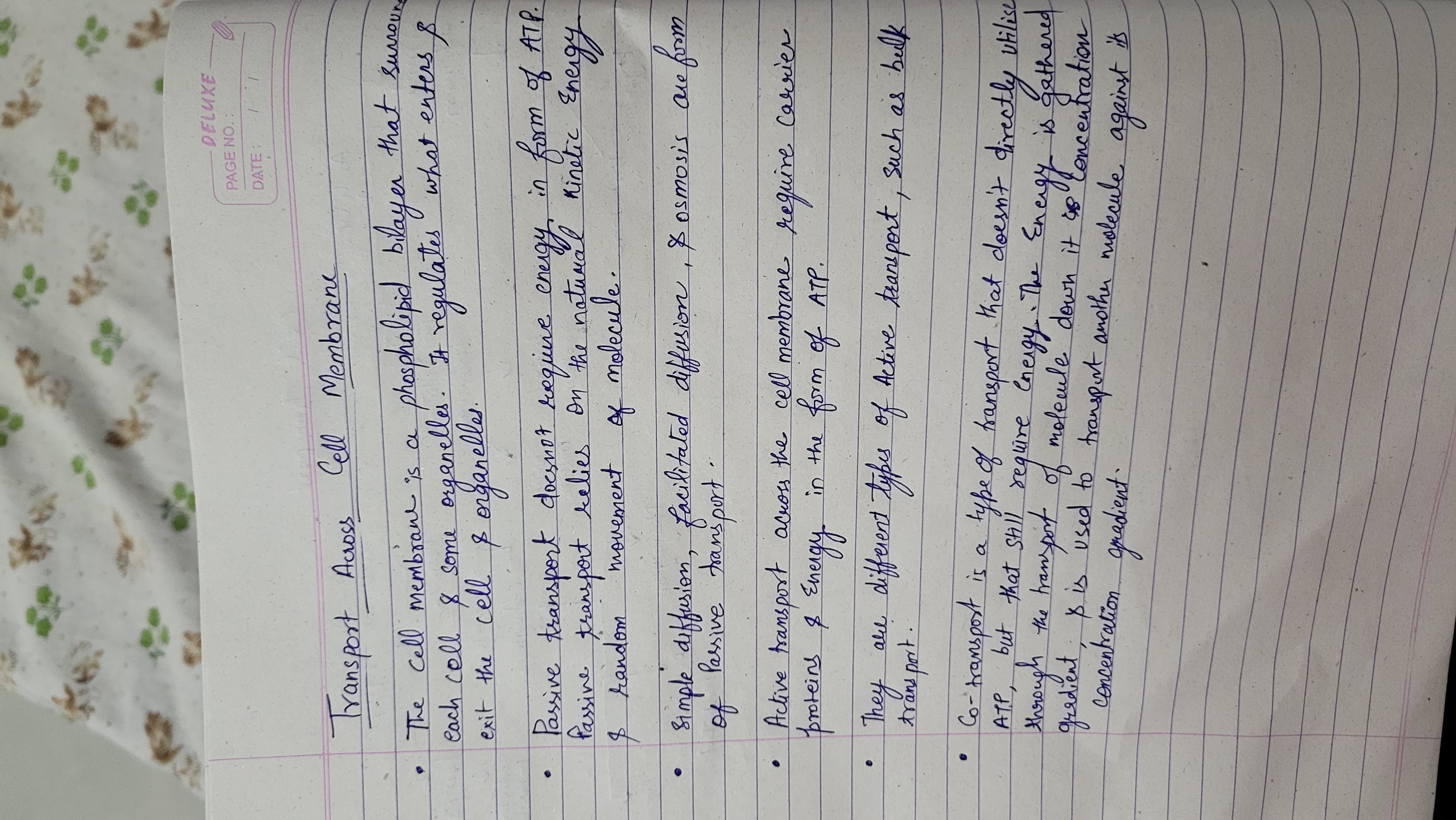What are the different types of transport across cell membranes?

Understand the Problem
The text provides an overview of the types of transport mechanisms across cell membranes, including passive and active transport, and specific methods like co-transport. It explains the roles of energy and movement in these processes.
Answer
Two main types of cell membrane transport: passive (simple diffusion, facilitated diffusion, osmosis) and active (ATP-dependent).
The final answer is that there are two main types of cell membrane transport: passive (simple diffusion, facilitated diffusion, osmosis) and active transport (utilizing ATP and carrier proteins, including bulk transport and co-transport).
Answer for screen readers
The final answer is that there are two main types of cell membrane transport: passive (simple diffusion, facilitated diffusion, osmosis) and active transport (utilizing ATP and carrier proteins, including bulk transport and co-transport).
More Information
Cell membranes are phospholipid bilayers that regulate the movement of substances in and out of cells. Passive transport relies on concentration gradients, while active transport requires energy to move substances against gradients.
Tips
A common mistake is confusing passive and active transport. Remember that passive transport does not use energy (ATP), whereas active transport does.
Sources
- Passive transport and active transport across a cell membrane article - khanacademy.org
- Transport Across Cell Membrane - Active and Passive ... - BYJU'S - byjus.com
- 11.8: Transport Across Cell Membrane - Chemistry LibreTexts - chem.libretexts.org
AI-generated content may contain errors. Please verify critical information